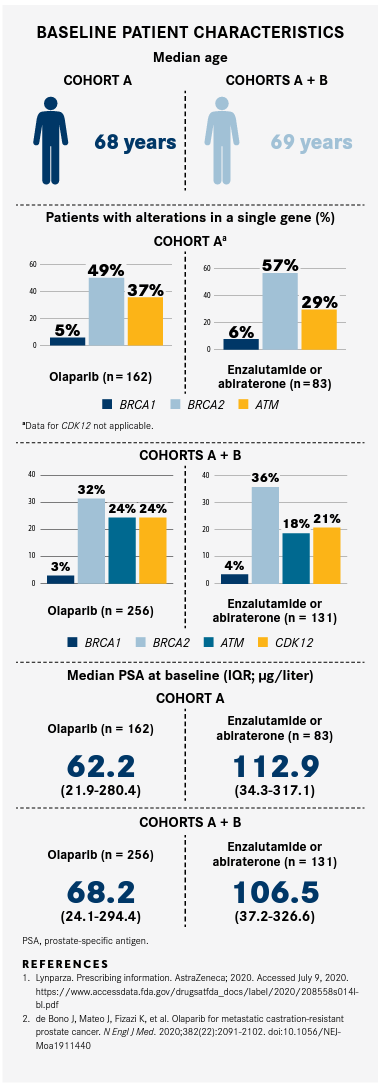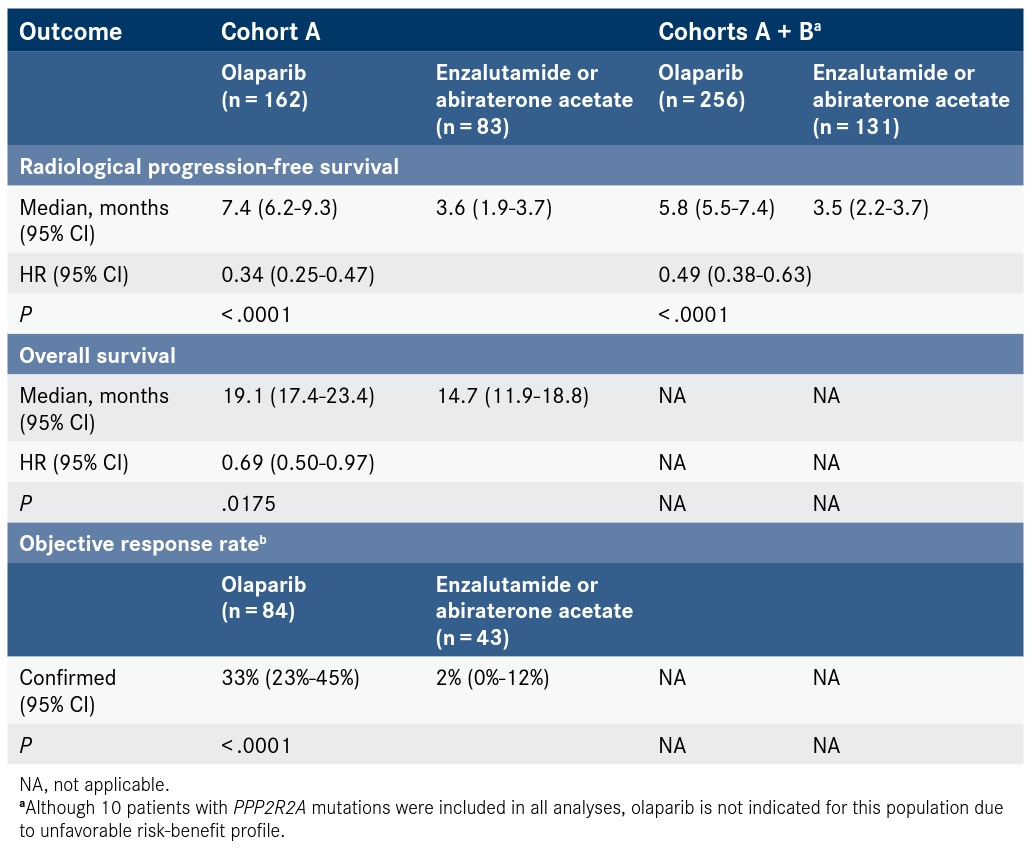Biomarker-Driven Monotherapy Enters mCRPC Paradigm
The PARP inhibitor olaparib is now available for patients with metastatic castration-resistant prostate cancer whose tumors harbor mutations in homologous recombination repair genes.
A. Oliver Sartor, MD

The PARP inhibitor olaparib (Lynparza) is now available for patients with metastatic castration-resistant prostate cancer (mCRPC) whose tumors harbor mutations in homologous recombination repair (HRR) genes. The indication covers mutations in 14 genes, including BRCA1/2.
On May 19, 2020, the FDA approved olaparib for the treatment of adults with deleterious or suspected deleterious germline or somatic HRR-mutated mCRPC who have progressed following prior treatment with enzalutamide (Xtandi) or abiraterone acetate (Zytiga).

The PARP inhibitor’s approval is based on efficacy data from the phase 3 PROfound study (NCT02987543). Results showed that olaparib demonstrated a statistically significant improvement in radiological progression-free survival (rPFS) compared with investigator’s choice of control therapy in the study’s cohort A, which included 245 patients with BRCA1/2 or ATM mutations (median rPFS, 7.4 months vs 3.6 months; HR, 0.34; 95% CI, 0.25-0.47; P < .0001).
Additional efficacy outcomes were assessed in combined cohorts A + B, which comprised patients with either a BRCA1/2 or ATM genomic tumor aberration and a cohort B HRR-related gene mutation. Cohort B included patients with BARD1, BRIP1, CDK12, CHEK1, CHEK2, FANCL, PALB2, PPP2R2A, RAD51B, RAD51C, RAD51D, or RAD54L mutations. A clinically meaningful rPFS benefit with olaparib was observed in cohorts A + B, at 5.8 months with the PARP inhibitor versus 3.5 months with the control intervention (HR, 0.49; 95% CI, 0.380.63; P < .0001).
In an interview with OncologyLive®, A. Oliver Sartor, MD, medical director of the Tulane Cancer Center in New Orleans, Louisiana, discussed the “unequivocally positive” survival data from the PROfound study and the need to sequence patients’ tumors to direct them to a targeted therapy such as olaparib.
OncologyLive: Please describe the biomarker-driven nature of the approval.
Sartor: Very importantly, the patient selection criteria included homologous recombination genes and all but 1 were included in the FDA approval. The approval encompasses BRCA1/2, ATM, BARD1, BRIP1, CDK12, CHEK 1/2, FANCL, PALB2, RAD51B, RAD51C, RAD51D, and RAD54L, which is a little bit surprising, because some of these somatic mutations, like PALB2, have some evidence of efficacy, but others, like CDK12, have very [few] efficacy measurements.
For example, the PROfound study included a cohort A and a cohort B. Cohort A included BRCA1/2 and ATM, and pretty clear activity was shown in patients with BRCA1/2-mutant disease, whereas the ATM gene did not appear to be a particularly favorable predictive biomarker for olaparib response. Nevertheless, the FDA included it in the label. It was surprising to me that the FDA approval and the activity in individual gene subsets in the PROfound study did not match up in a one-to-one manner.
What stood out about the efficacy data that led to the approval?
I know everyone is aware of the unequivocally positive radiological progression-free survival, which had a very impressive hazard ratio of 0.34, but I think what is not known to everyone is that there was an overall survival benefit despite crossover. More than 60% of the patients crossed over from the control arm to the olaparib arm, and despite that crossover, there was a statistically significant improvement in overall survival. This finding was reported in a preliminary fashion in the paper published in the New England Journal of Medicine, but the final overall survival was reported in a press release and was noteworthy.
Efficacy Results for Approval in the PROfound Trial

Are there specific toxicities that warrant attention?
Olaparib is pretty well tolerated, but you do need to watch out for myelosuppression and anemia. A significant proportion of patients develop some grade of anemia and a variety of cases were grade 3 or 4, causing a few patients to stop treatment. Anemia can be important in patients who are elderly, especially among those who may have congestive heart failure or other issues that could be exacerbated by the development of anemia. There was also some thrombocytopenia and neutropenia. In addition to the [hematologic] toxicity, there was also some fatigue, nausea, a little bit of vomiting.

What protocols are necessary to optimize this biomarker-associated therapy?
This is a precision medicine approach: You need to analyze the tumor, and that is something that we have done somewhat optionally before, but I think now it really becomes almost a requirement in order to optimize therapy. Pembrolizumab [Keytruda] is also approved in prostate cancer for patients with microsatellite instability high or mismatch repair deficiency. This precision medicine platform now makes it almost obligatory that patients with advanced mCRPC undergo tumor analysis to identify the genomic aberrations that can guide therapeutic selection, particularly after the use of either abiraterone or enzalutamide.
What are the next steps for PARP inhibition in mCRPC?
Rucaparib [Rubraca], another PARP inhibitor, is also FDA approved [for BRCA-mutant mCRPC], and its approval actually preceded olaparib’s by a couple of days. Rucaparib’s approval is provisional, so additional studies are needed to support its full approval.
With PARP inhibitors, I think that we still have a long way to go in terms of optimizing the bioassays, which depend on a predictive biomarker. In olaparib’s case, the predictive biomarker would be DNA repair alterations, particularly the BRCA genes, but a large number of genes have been included within the approval, so more study is required. We need to understand their monoallelic versus biallelic nature, and going beyond the genomics may be required. It could be that the protein assays are required because that is really what creates the synthetic lethality—not the loss of a gene, but the loss of a protein function. We still have a long way to go in terms of optimizing the biomarkers used for this type of trial selection.
Reference
- Lynparza. Prescribing information. AstraZeneca; 2020. Accessed July 9, 2020. https://www.accessdata.fda.gov/drugsatfda_docs/label/2020/208558s014lbl.pdf




